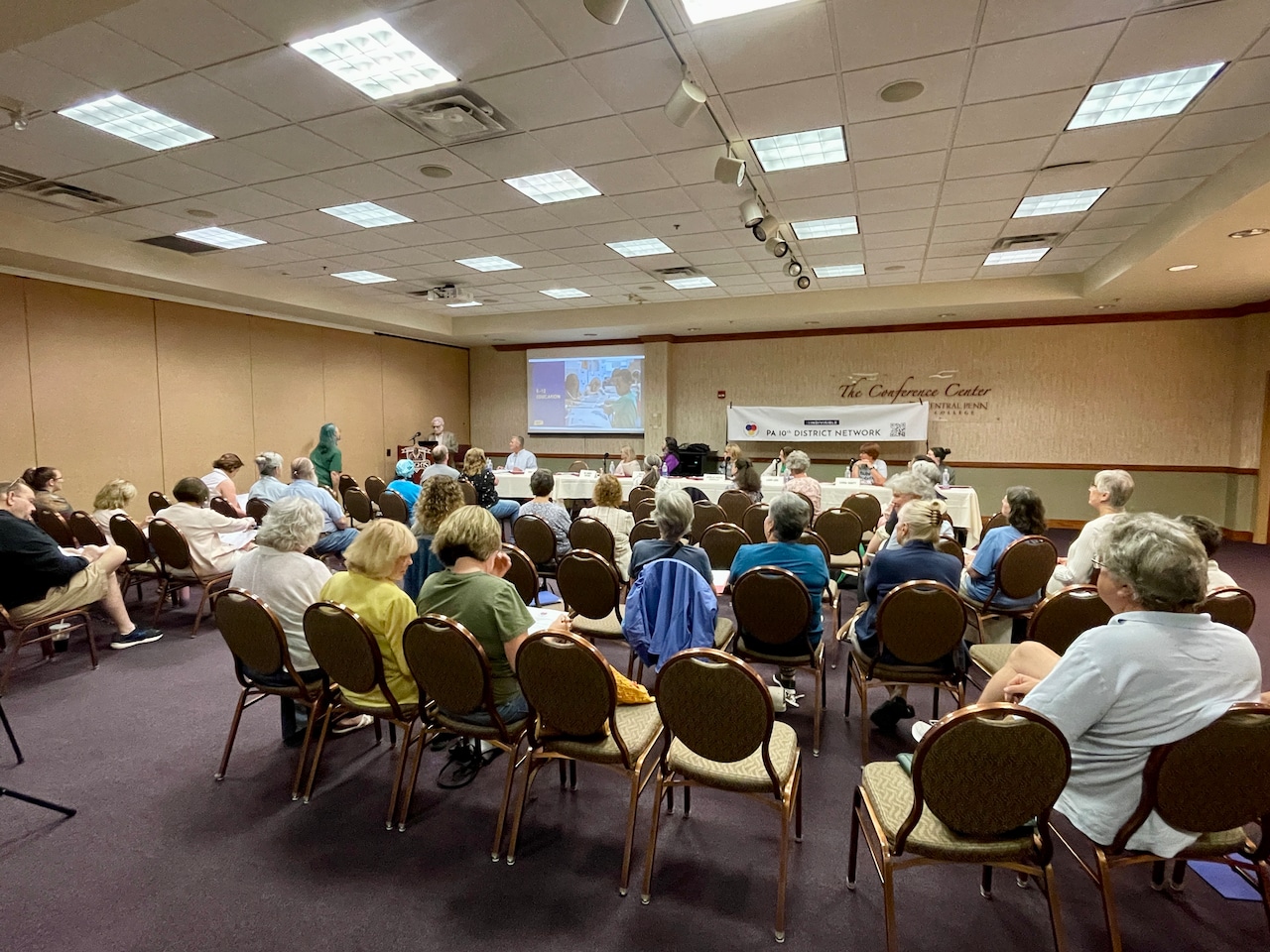
What are the critical issues and challenges facing local school board directors?
The answers to those questions were covered in a two-hour event, entitled “School Board Elections: What Voters Need to Know,” on Sunday afternoon at Central Penn College.
It was advertised as a non-partisan forum organized by the 10th District Network School Board Issues Forum and was planned a little more than four weeks before the November election.
The 10th District encompasses all of Dauphin County as well as parts of Cumberland and York counties, and includes the cities of Harrisburg and York.
The event, which drew around 30 people on a sunny and unseasonably warm Sunday, featured a panel discussion that was promoted as addressing topics such as bullying and mental health, school safety, societal and the increasingly complex dynamics within school board governance.
The keynote address was delivered by Marc Stier, executive director of the Pennsylvania Policy Center, who kicked off the event by highlighting the event’s other major topic: the state’s “inadequate” K-12 education funding system.
He said the state funding of K-12 in Pennsylvania has dropped from over 50 percent in the 1970s to around 32 percent today, which is far below the national average of 48 percent.
Another problem Stier highlighted is that state funding for schools was “totally chaotic, which is another way of saying totally political,” for years.
“In the 25 years up to 2014, funding for school districts only went through a formula that had some rational basis for four of those years,” he said, adding, “for most of that period, the legislators would take what they were given last year and then add based on which legislator had more political power than others.
“That meant that the school districts that got more tended to be school districts that were wealthier and whiter. And so we had a consistent pattern of while we are reducing state support, additional state monies are going mainly to school districts that are wealthier and white.”
Stier explained that because Pennsylvania provides limited state support for public schools, local districts are forced to rely on local funding for over 65 percent of their funding.
This reliance, he said, creates deep disparities, as the wealth and income available to fund education vary widely between communities, leaving students in lower-income districts at a disadvantage.
“A school district that’s located at the King of Prussia Mall, there’s a lot of property wealth, they can raise tons of money at very low rates,” he said. “Districts in poorer communities can raise very little money at very high rates because there’s simply not enough wealth in those school districts.”
He posted a chart showing how money was funded to lower-income school districts vs. higher-income school districts.
The chart showed that the schools in high-income districts revealed an adequacy gap — what the districts have and what the state needs to provide them — of $558 per student, compared to schools in low-income districts, where the gap is $3,460.
Stier also showed another chart based on race, with a similar disparity.
“These are extraordinarily large differences,” he said after reviewing the numbers. “And frankly, they are the largest differences or the second largest differences in the entire country.
“It’s simply a myth that schools don’t do well in Pennsylvania,” he continued. “The truth is, schools that are well-funded in Pennsylvania are as good as schools anywhere in the entire world. But schools that are poorly funded in Pennsylvania do a very bad job, and that’s because they’re not well funded.”
As to whether the situation will improve, Stier didn’t sound positive. He noted the current Pa. budget impasse, the fact that the state is spending about $3 billion a year more than it’s taking in, and that the unspent COVID relief funds that have helped cover that deficit might only last another two years, “and then we hit a wall.”
Add in the effects of the reconciliation bill, and it could mean the state will be looking at an annual deficit of $7 billion.
There’s a way to find that revenue, he said, but “whether this General Assembly has the political will to do it, whether our governor has the political will to ask for it, however, is another question.”
The event was moderated by George Scott, an adjunct professor at Messiah College and a former candidate for U.S. Congress and the Pennsylvania Senate.
Included on the panel were the following:
Dr. Nancy Snyder, public school administrator, retired
Heath Copeland, advocate for gun safety regulations
Jannelle Crossley, advocate against school violence in Central Pennsylvania
Lauri Lebo, PSEA advocate/author of “The Devil in Dover: An Insider’s Story of Dogma vs. Darwin in Small Town America”
Carol Yanity, Social Studies teacher, member of PSEA, board of directors, National Education Association (NEA)
Lillian Tomaselli, junior, honor student, Cedar Cliff High School